Tales of the Epoxy Countertops
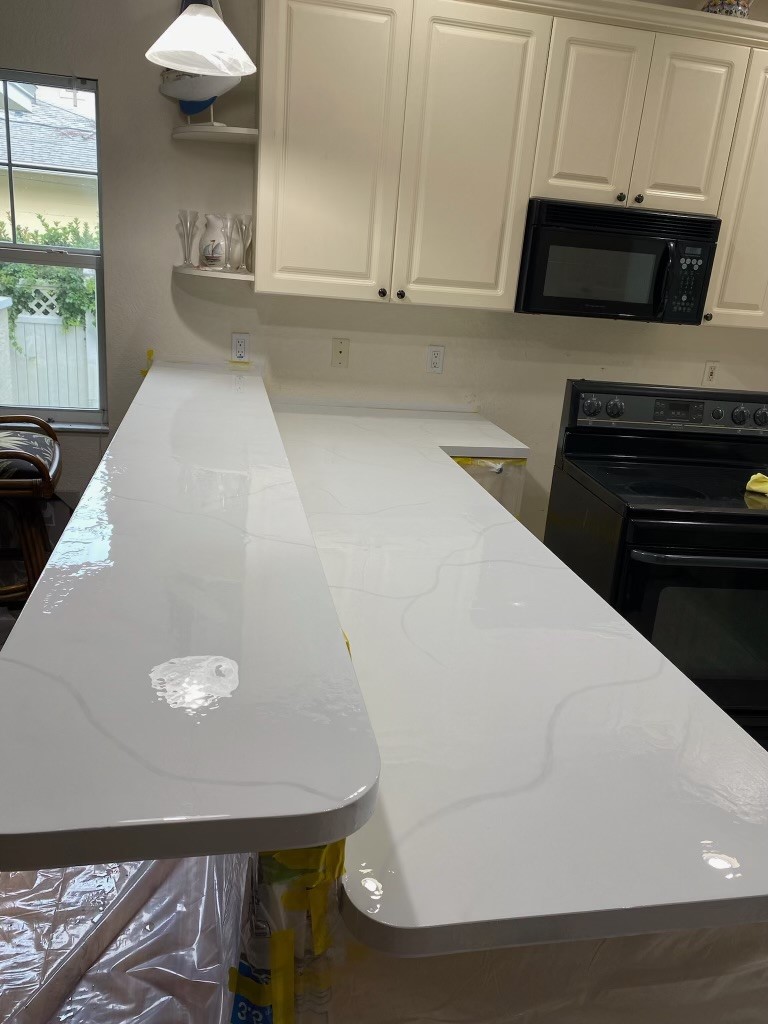
Tales of the Epoxy Countertops
I sat there and stared at the ugly speckled laminate countertops. I sat and just stared at them.


We didn’t have the budget for the lovely upgrade of stone I would have loved, but i HAD to get rid of the ugly laminate….and fast!
I had been working with epoxy for a year or so on other little projects, but this was the biggest epoxy project to date. A lot like concrete this 2-part epoxy is a thoroughly mix, pour, self-level, remove bubbles, and let cure and harden application.
Step 1: Painting
I didn’t have endless epoxy on hand, so i knew i was better off painting the black countertops and using a clear epoxy rather than tinting the epoxy to cover up the black laminate.
I decided to paint the countertops white and added a little grey veining using a paintbrush and softening the paint line with a wet sponge. Now…in hindsight, I think i would have stuck to the pure white without adding the veining. Maybe I’ll do another pour down the road.
Step 2: Epoxy
I added equal part A and part B into separate containers and then combined them into a 3rd container for mixing. I cannot stress this enough THOROUGHLY MIX! Let me repeat that Thoroughly Mix!! Use a paint stick to scrape the sides to make sure nothing is stuck to the sides. (See the Trial and Error notes for an explanation)
Once mixed pour evenly over the countertops. I used my disposable gloved hands to help evenly move the epoxy to cover the countertop. It will self level, but i wanted to make sure everything was covered. Make sure to get the edges with a thick coat as it will self level off the countertop due to gravity. I saved a bit of epoxy to add to the edges a few minutes later to make sure there was enough epoxy on the edges. It will thicken for that second round on the edges, so don’t wait too long.
Step 3: Bubbles and Drips
Once countertops are self leveled and the second round on the edges (not too long maybe 5-10 min) take your heat gun and run it quickly over the counter to pop the remaining air bubbles. You can also use a precision torch to make sure you get even the smallest bubbles. **CAREFUL NOT TO BURN THE EPOXY*** Keep a bit of a distance and use quick passes.
As the epoxy drips from the edge of the countertops scrape the dripping epoxy with a paint stick. It will continue to drip over the curing time and to avoid cured drip bumps keep scraping off the excess.
I let my countertops cure and harden over night.
The amount of epoxy and paint you will need will very based on the amount of counter space you have but i used the thin plastic paint buckets. I would not use the industrial plastic bucket as you will probably ruin it. (I was able to remove the hardened epoxy later on by bending and cracking off the epoxy in pieces.)
“Don’t Forget” Items and Tips
- Plastic Sheet the areas around the countertops. Being a self leveling product, the epoxy wants to run! and you don’t want it all over your floors.
- Wear protective safety gear (eyewear, disposable gloves, respirator) and be in a well ventilated area.
- As noted above wear disposable gloves and have excess on hand. Epoxy is ultra STICKY and is incredibly hard to remove after the fact.
- If your heat gun is corded please make note of the cord and extension cord. Do not let it drag in the epoxy…it will break your little heart with a heck of a mess not to mention it could ruin the cord. Yes this happened – face palm!!!
Trial & Error
Ok so here is the explanation…..
The FIRST go around I put Part A and Part B together in one bucket and mixed with a stir stick but failed to scrape the sides. Thinking back on it I’m not even sure i had equal parts A and B let alone mixing it well. I also know I failed to scrape the sides, so as i was running out and scraping the sides it was not a mixed product but merely part A or part B on the sides.
The next day when i excitedly checked my work expecting a beautifully cured counter, to my horror I was sorely disappointed. It didn’t cure in spots leaving it soft and pliable and it was SUPERRRR sticky. With a broken heart i scraped off the sticky soft spots and repeated the work ALL OVER AGAIN! What a mess. But i certainly LEARNED MY LESSON! I feel like the super hard way!
My tip is to pour Part A into a bucket, pour Part B into a separate bucket, and then mix them both (scraping the sides of each) into a 3rd bucket to mix. Mix with a paint stick thoroughly making sure to scrape the sides and the bottom.
Good luck and be sure to share your Epoxy Countertop tales!
-Kellie

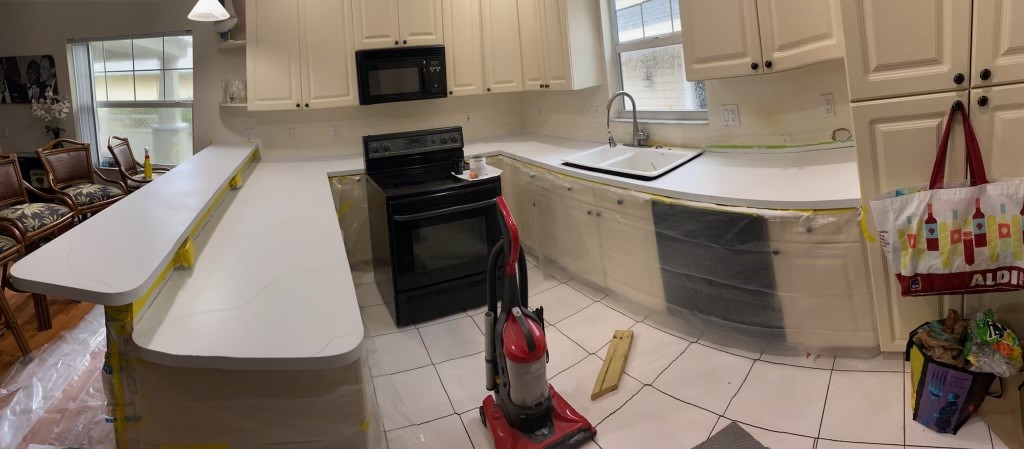



Tales of the Board and Batten Wall
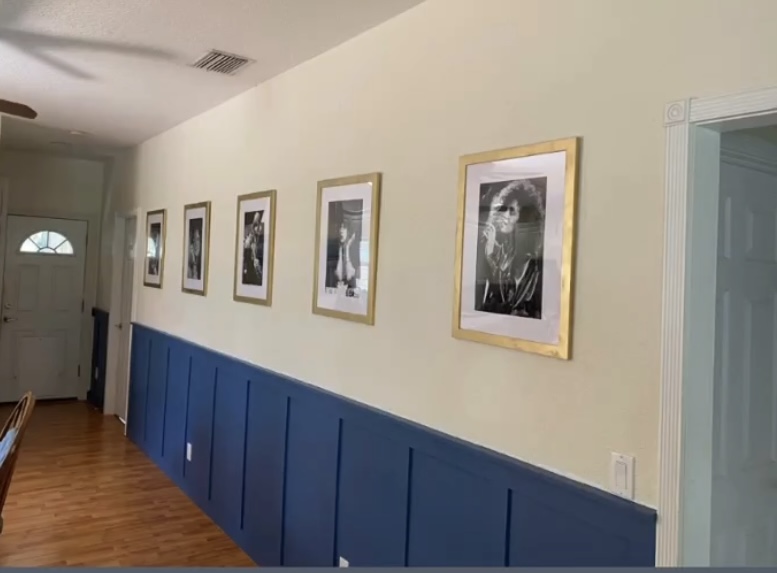
Tales of the Board and Batten Wall
My home has a very open kitchen to living space floorplan with a very blank wall on one side. I knew I wanted something to visually break up the wall, but artwork would be too small on this large wall, shelving would take up too much space, and just painting did not seem like enough impact on such a large wall.
I decided to add a color board and batten wall with a top ledge.
Get the surface READY
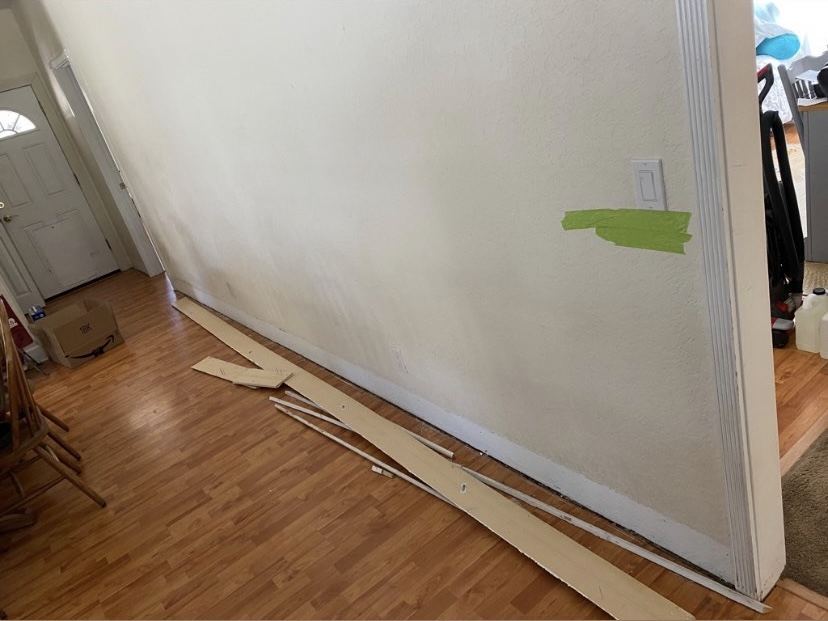
I started by REMOVING all of the baseboards and measuring how high I wanted this build to go. I knew that I wanted to have the top ledge sitting right under the light switch.
My walls have a KNOCKDOWN wall texture that I did not want showing through the back of the board and batten. So, I added panels of Hardboard from home depot and built the board and batten on top of it.
I used a circular saw to cut the panels to size, construction adhesive to adhere to the wall and using a nail gun, I added few pin nails on the edge of the panels to hold them in place flush against the wall as the adhesive dried.
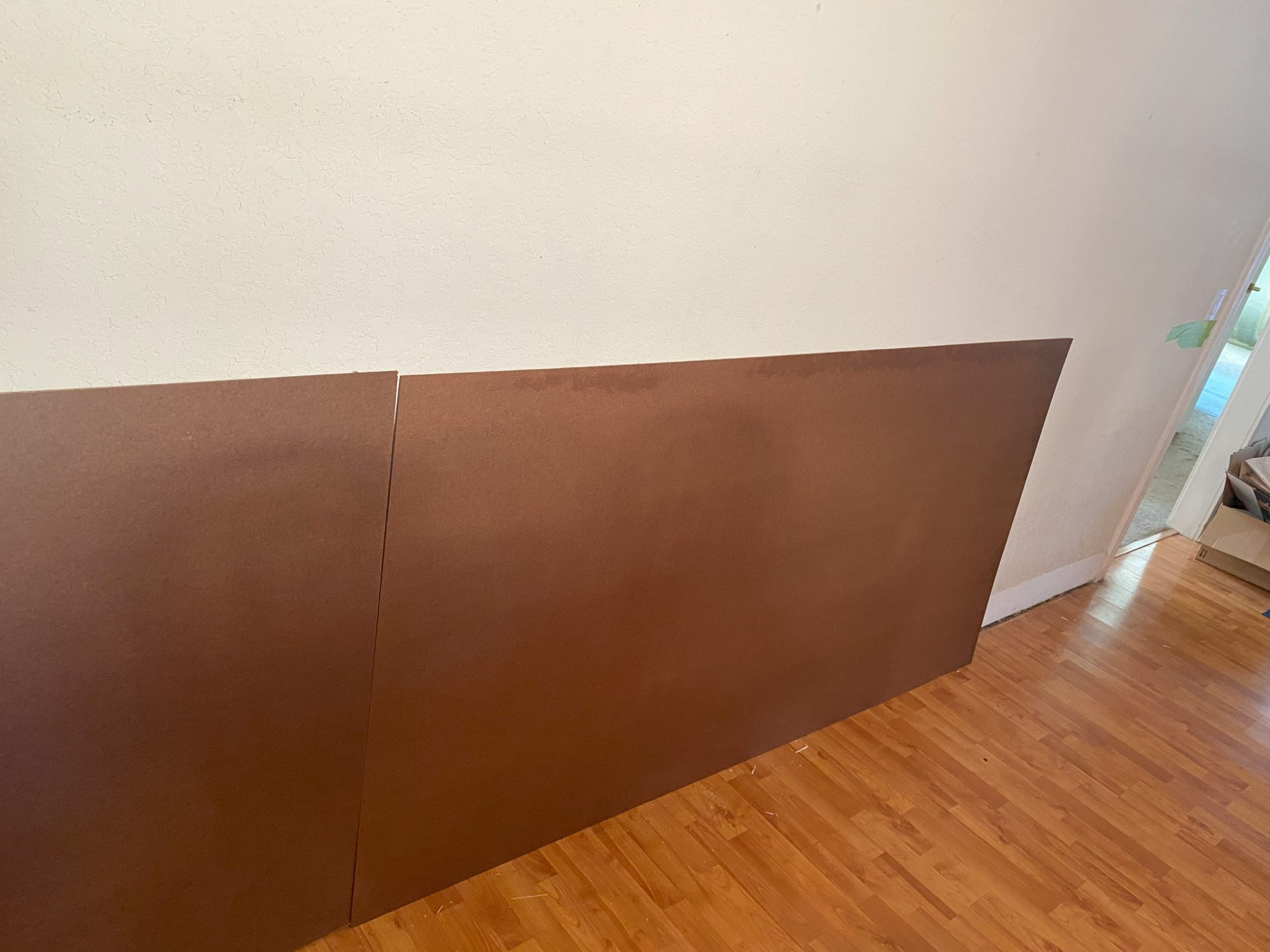
Make sure to measure TWICE and cut out spots for the electrical outlets. I used a drill to drill a hole and then used a jigsaw to cut the square out for the electrical outlet on the panel. Make sure the electrical cut out is large enough not to impede the outlet, but small enough to be covered by the outlet faceplate.
*Important* cut the panels to the right size so that a vertical batten will cover the seam of the panels butting up to each other.
Next up, building the board and batten
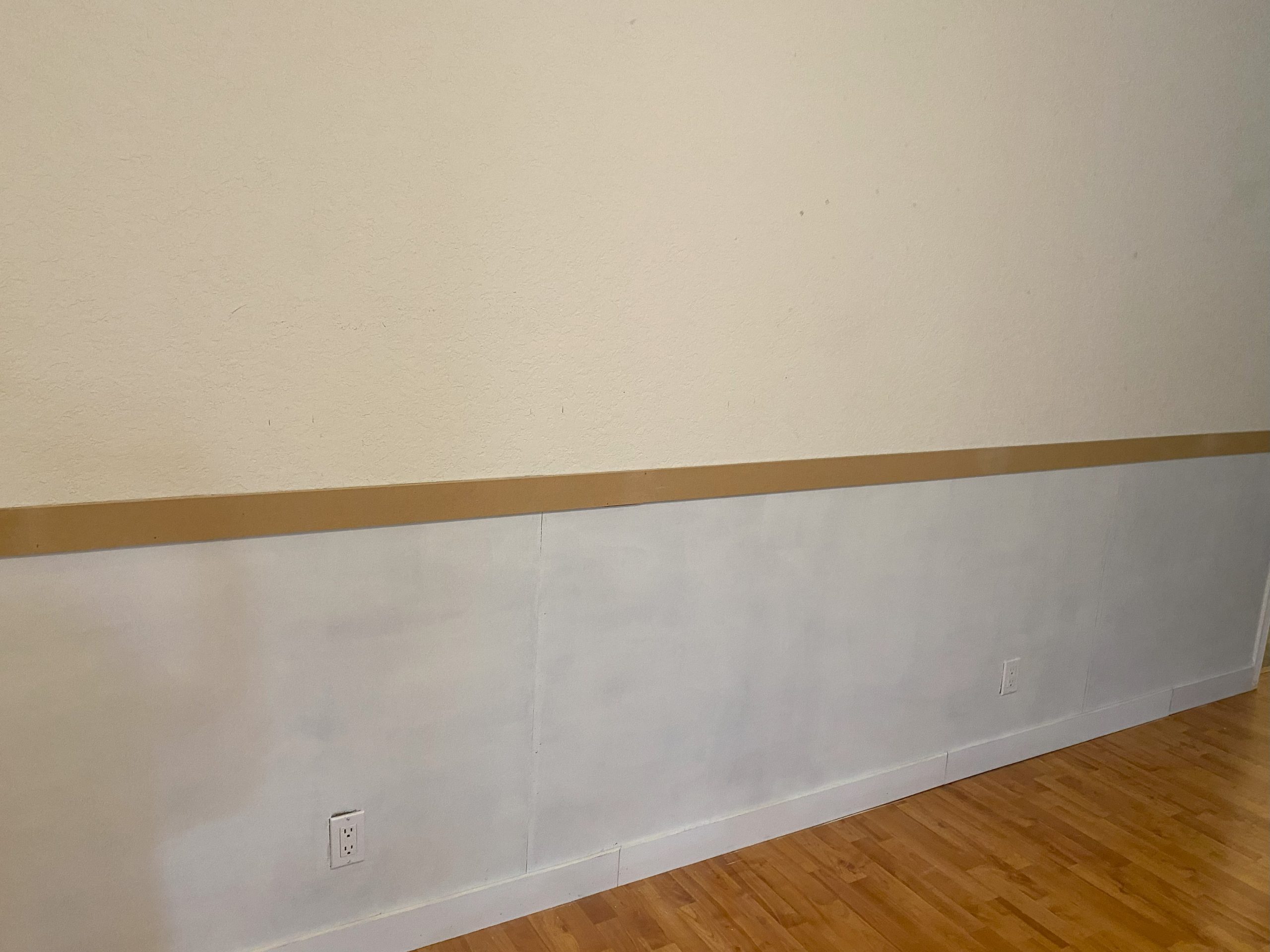
I used MDF boards (width is all preference) to build the battens and secured them with pin nails using a nail gun.
I added the top ledge using a pine board. I used pin nails as close to the wall as possible to nail into the top piece of MDF board on the board and batten.
Once in place I used a bullseye primer on both the panels and boards to ensure the MDF was sealed and both the panels of hardboard and the MDF boards all have the same surface for paint to ensure the paint looked uniform.
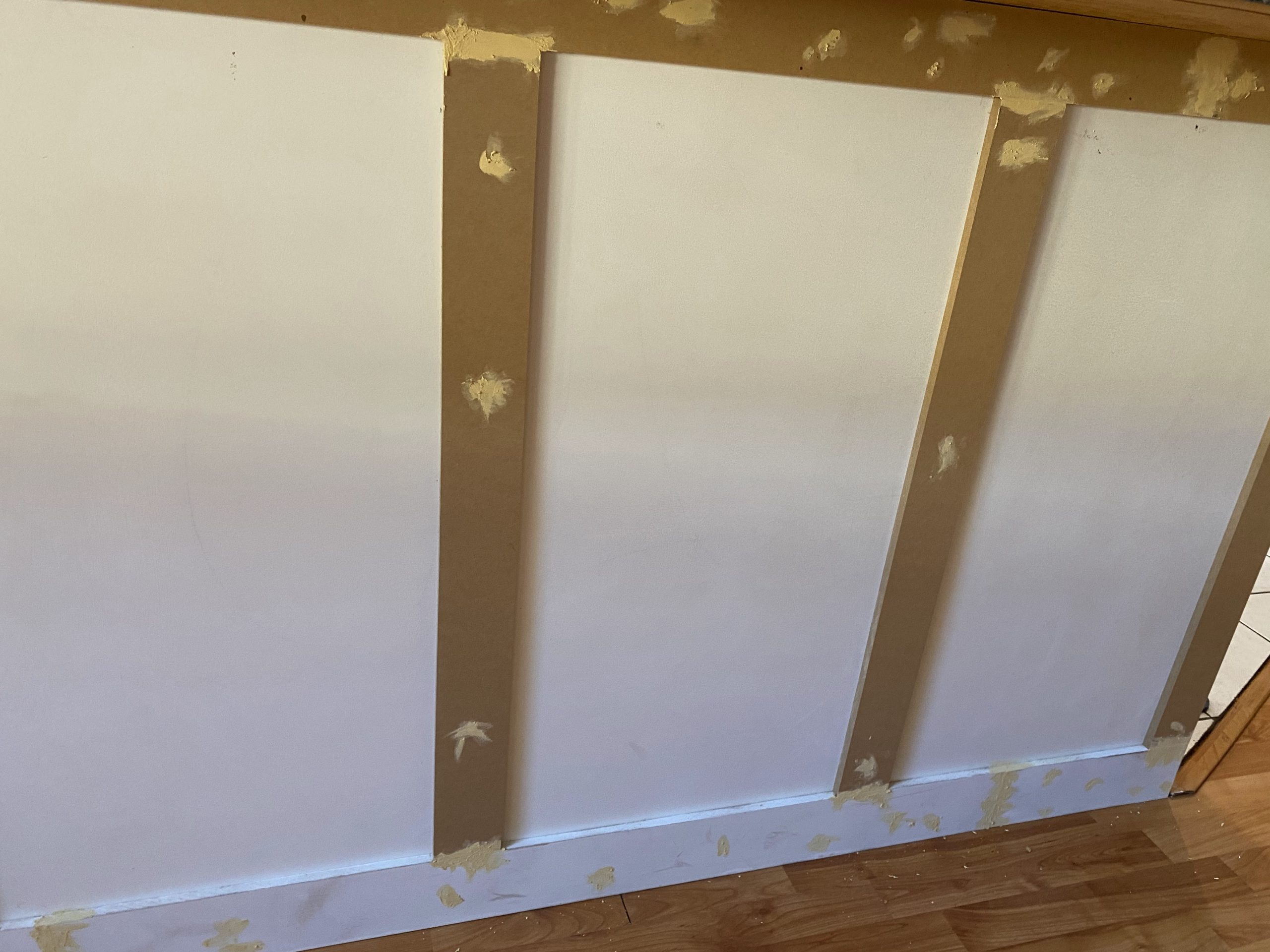
Once all of the MDF boards were in place, I used wood filler to fill in all of the adjoining seams and pin holes.
While this is a tedious step, don’t skip it! You want to make it look seamless once painted.
Once the wood filler dried, I gently sanded down the wood filler so that everything was smooth and flush with the boards.
I used a orbital sander with 220 grit sandpaper to ensure slow, even and smooth sanding.
*Make sure to clean off the excess wood filler on the 90 degree angle where you used wood filler on the seam – you want that edge to be crisp while still having the seam filled*
Prime and Paint
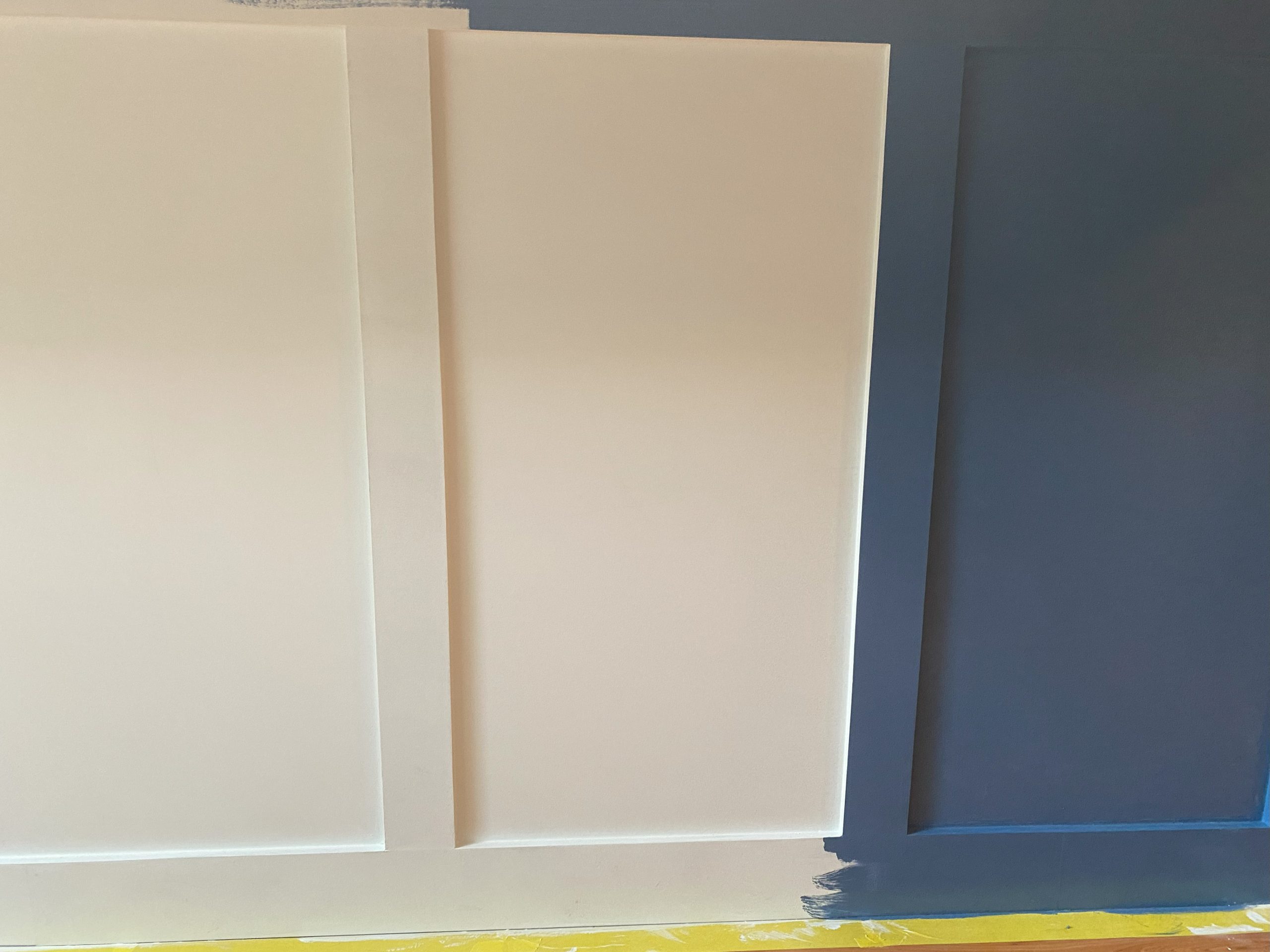
Once the wood filler is sanded, wipe off all of the dust particles using a microfiber cloth or a rag. Any missed dust will get trapped in the paint.
Aint NOBODY got time for a imperfection like trapped dust!
Finishing priming all the boards and I added a TINY bead of paintable caulk to where the board meets the panel to ensure that even the smallest gap was filled. Slide your finger along the bead of caulk to press into the gap and remove the excess.
Let everything dry and you’re off to PAINT with your desired paint color using a small roller for smooth surfaces and a small brush for those tough to reach corners.
FINISHED – now enjoy!
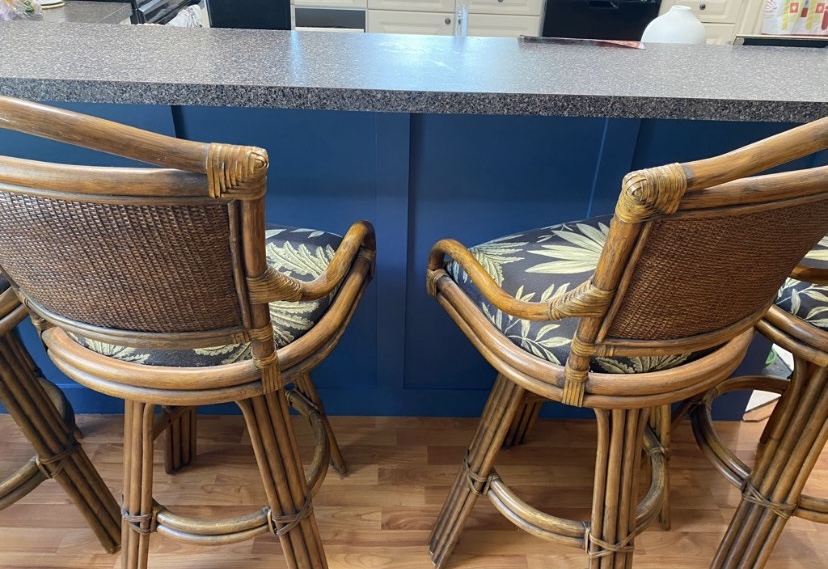

Added the Board and Batten detail under the peninsula bar to tie the room together
Added large prints with shiny gold frames to coordinate with the ‘Shipyard’ blue paint color.
TIPS and Tricks
- The hardest part about this project for me was ensuring that the seams of the adjoining panels were covered by a vertical board. It takes a little math and planning to make sure that not only is your vertical board spacing even, but also that one of those boards covers the seam. Take the time to make sure its right!
- Use a level as your best friend, especially if you’re using longer boards. You don’t want to go through all of this work, only to realize your battens aren’t straight or your ledge is not level.
- There is quite a bit of cutting with this project. To ensure you don’t waste material, as the old saying goes ‘measure twice and cut ONCE!’
Paint Color: SHIPYARD by Behr
Best of luck and reach out to share your own Board and Batten Tales!
-Kellie

Hi There – The Tales of the Keys Preface
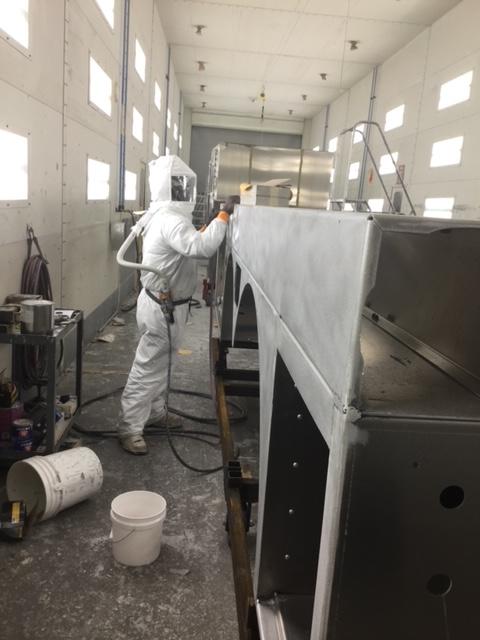
Hi There!
Welcome to Tales of the Keys where I discuss all things Real Estate and Home Renovation.
My name is Kellie Pfouts and I am a local Real Estate Agent with Coldwell Banker here in Saint Petersburg FL with a wee bit of a Renovation and DIY obsession.
I was working at a Fortune 500 company selling industrial products (glue, tape, abrasives, tools, you name it) when I realized my true career calling was in the housing industry. I was eat, sleep, think and dreaming real estate and renovation non stop!
Having my coffee – looking at houses. Going to bed – looking at houses. Dentist office – looking at houses. Waiting room of customers – looking at houses. You get the idea. All the while I was DIYing and renovating my house as an evening/weekend warrior.
I became a REALTOR here in St Pete and shifted my ‘How Its Made’ building knowledge to home renovation.
Now that you know a little about what lead me into Real Estate and Renovation – lets get into it!
-KP
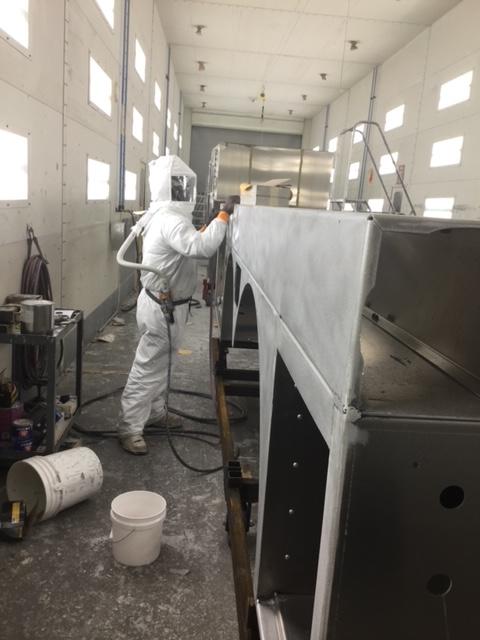
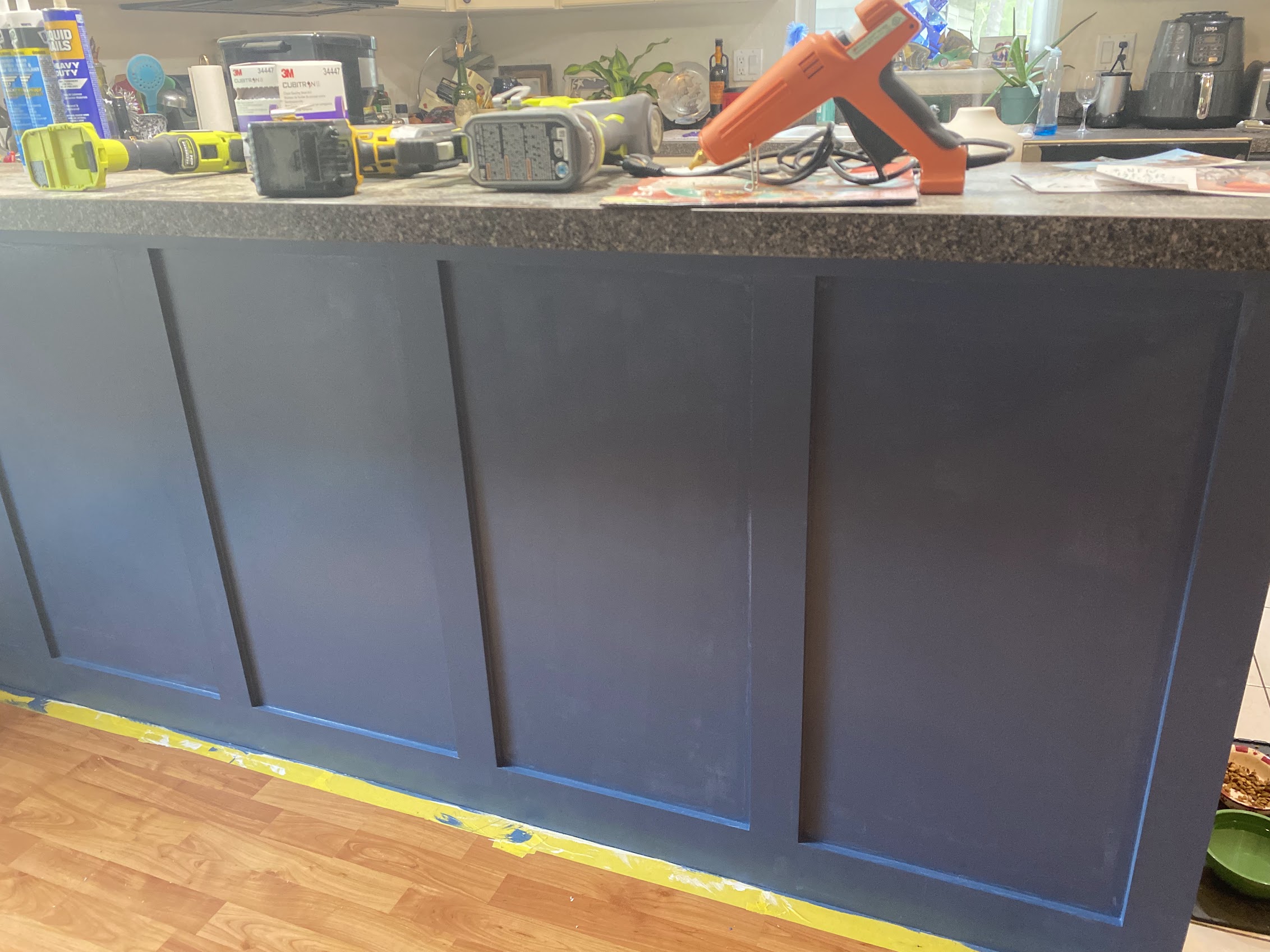
(Left) picture of a side by side sanding test I ran at a manufacturing facility trying to sell them sanding discs by the case.
(Right) Renovation project i took on at my house while working at my sales job


 Facebook
Facebook
 X
X
 Pinterest
Pinterest
 Copy Link
Copy Link